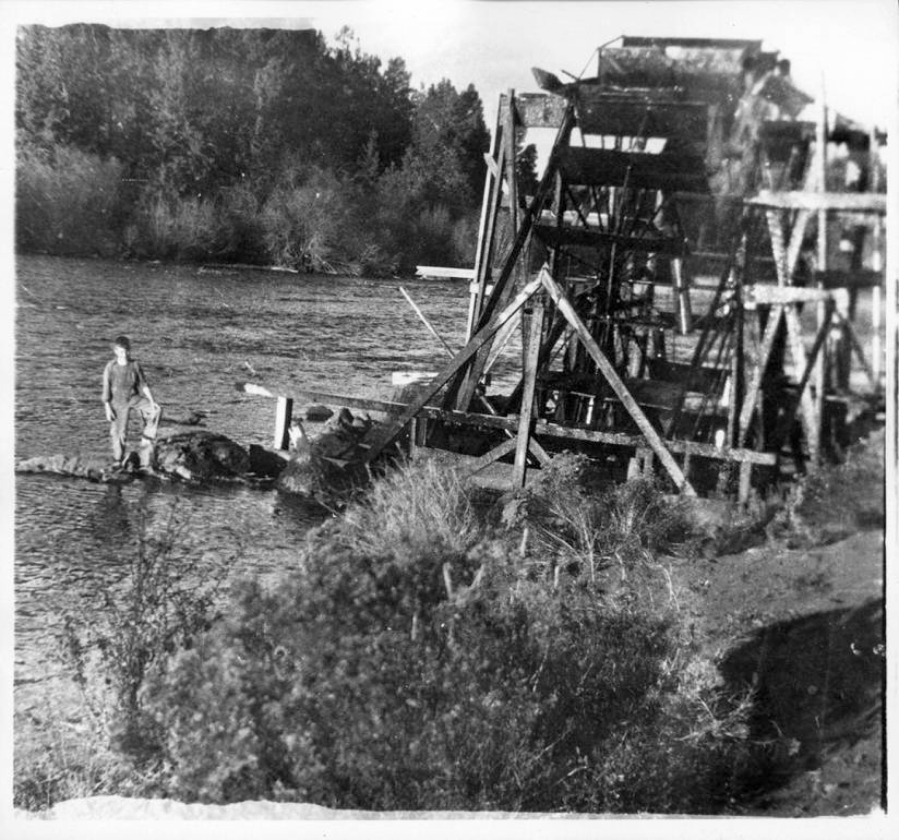For 10,000 years, Indigenous people used stone spears, dip nets made of bark or grasses and fish weirs of brush and branches to catch and stockpile salmon and other fish for winter.
Then Europeans mechanized and commercialized fishing. In the late 19th and early 20th centuries, fish wheels automated fishing on the Columbia River, making it easier for canneries to profit by catching more fish with less human effort.
Who invented the fish wheel? No one knows. Maybe someone in Asian or Nordic regions. In the United States, fish wheels first appeared on North Carolina rivers around 1829 for catching shad. About 35 years later, the first one sat on the Columbia River. Fish wheels’ efficiency for hauling up salmon popularized their use and gave them a new name: salmon wheels. They caught salmon swimming upstream to spawn, which hampered fish reproduction.
Fish wheels were a kind of rotating waterwheel with two opposite nets for catching fish. The current pushed a series of paddles to power the wheel. As the wheel turned, one mesh basket entered the water and the other came out with fish. The basket lifted them up and when the catch reached the right height, the fish tumbled across the net and into a holding box. By then, the second dipper submerged and spooned up more fish, repeating the process.
Salmon wheels ran quietly. Only the slapping of the mesh dippers entering the water made noise. Workers around the fish box wore gum-soled boots and spoke softly to avoid frightening the fish. Floating fish wheels leaked and had to be bailed often but silently. Workers filled minor leaks with sawdust, which swelled and stopped the leak. They filled serious ones with concrete.
The machine might be placed on a raft or a barge, while stationary wheelhouses stood on a docklike structure that extended into the river’s fast current. Fishermen pushed the rafts or barges (sometimes called scows), which had wheels up to 20 feet in diameter, into a river’s swift channel. Stationary fish wheels had wider diameter wheels and ran around the clock. Sometimes, a fish weir guided the fish toward the wheelhouse to increase the catch.
Between Bonneville and The Dalles, over 70 fish wheels operated in the 1880s. That didn’t count all the wheels working along the river’s length. Canneries owned some of these, while independent operators ran others and sold their catch to canneries.
In the end, fish wheels caught too many fish. By the 1920s, salmon declined, and the public feared salmon might disappear. Oregon outlawed fish wheels in 1926 and Washington in 1934.
Fishing rights given to Indigenous people had been ignored since the signing of treaties in the 1850s. Activists started demanding treaties be upheld and provide what they promised: “the right of taking fish, at all usual and accustomed grounds and stations.”
A little over 100 years after the first fish wheel spun on the Columbia, activists’ effort resulted in the 1974 Boldt Decision, which granted Indigenous people their promised fishing rights. In doing so, the decision more broadly affirmed tribal sovereignty.
Martin Middlewood is editor of the Clark County Historical Society Annual. Reach him at ClarkCoHist@gmail.com.



